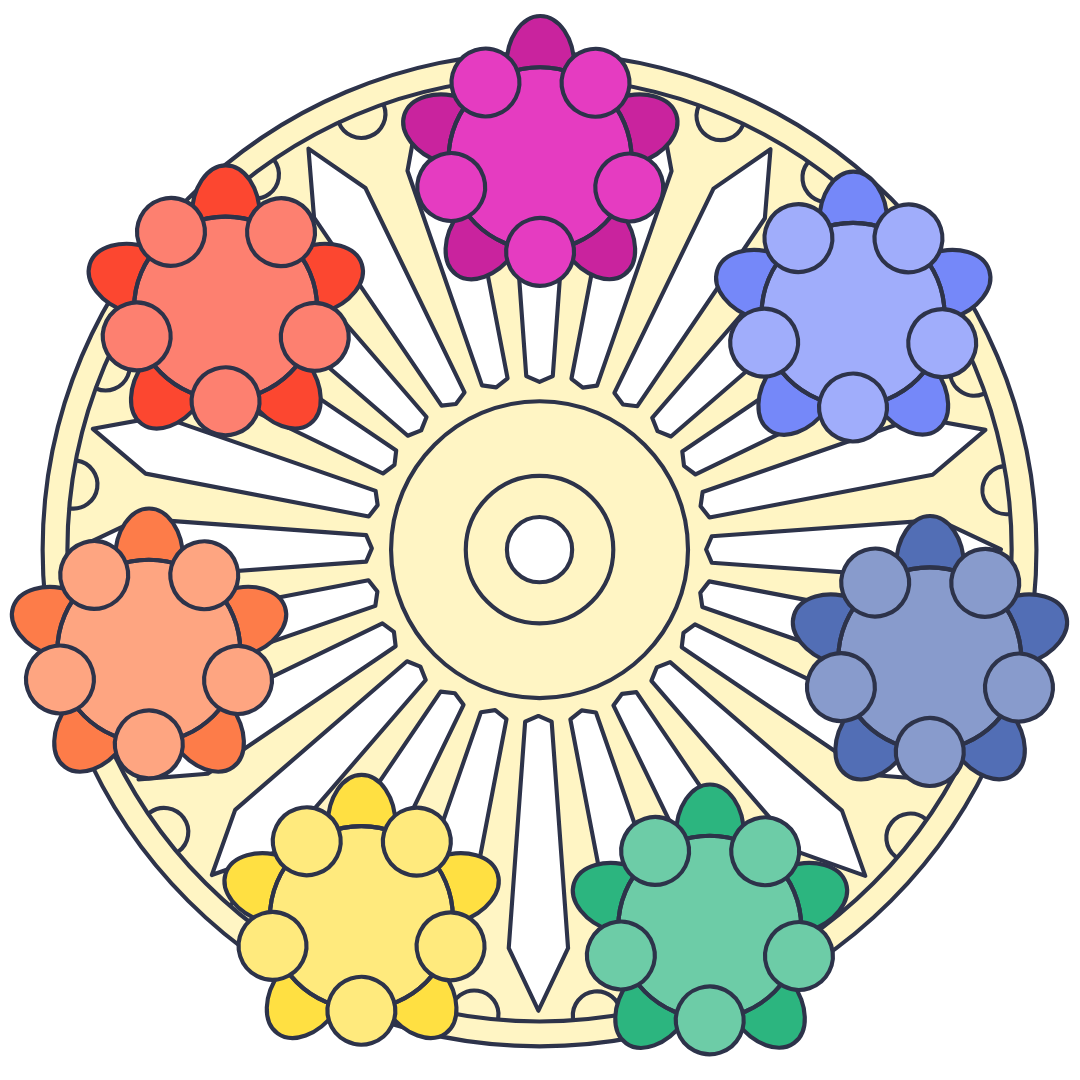Circular seals have been used for centuries as a means of authentication and identification. These seals are typically made of wax or metal and are imprinted with a unique design or symbol. They have been used in various cultures and societies around the world, serving as a way to validate documents, letters, and other important items. The use of circular seals has evolved over time, but their significance in history cannot be understated. In this article, we will explore the historical context and factors influencing the uptake of circular seals in two regions of Brazil: Natal and Pernambuco. By examining the usage of circular seals in these areas, we can gain a better understanding of their cultural and historical significance.
Historical Context of Circular Seals in Natal
Natal, a city located in the northeastern region of Brazil, has a rich history dating back to the 16th century. During this time, circular seals were commonly used as a means of authentication and identification by the Portuguese colonial authorities. These seals were often imprinted with the royal coat of arms or other official symbols, serving as a way to validate important documents and letters. As Natal continued to develop and grow, the use of circular seals became more widespread, with various government and administrative bodies adopting them as a standard practice. The historical context of circular seals in Natal is closely tied to the city’s colonial past and the influence of Portuguese culture and governance.
In addition to their use by colonial authorities, circular seals also played a significant role in the private sector in Natal. Wealthy landowners and merchants often used personalized circular seals to mark their possessions and correspondence, adding an extra layer of security and prestige to their belongings. The historical context of circular seals in Natal is therefore multifaceted, encompassing both official and private usage. This rich history has contributed to the enduring significance of circular seals in Natal and their continued presence in the region.
Historical Context of Circular Seals in Pernambuco
Pernambuco, another northeastern state in Brazil, has its own unique historical context when it comes to the usage of circular seals. Like Natal, Pernambuco has a colonial past that has greatly influenced the adoption and evolution of circular seals in the region. During the colonial period, circular seals were used by the Dutch, who briefly occupied Pernambuco in the 17th century. The Dutch brought with them their own traditions and practices, including the use of circular seals for authentication and identification purposes. This period of Dutch influence left a lasting impact on the historical context of circular seals in Pernambuco, shaping their usage and significance in the region.
After the Dutch occupation, Pernambuco returned to Portuguese rule, and circular seals continued to be an important part of administrative and governmental practices. The use of circular seals expanded beyond official documents and letters to include a wide range of applications, from marking legal agreements to validating commercial transactions. The historical context of circular seals in Pernambuco is therefore closely tied to the region’s colonial past and the diverse cultural influences that have shaped its development over time. This rich history has contributed to the enduring presence of circular seals in Pernambuco and their continued relevance in the region.
Factors Influencing the Uptake of Circular Seals in Natal
The uptake of circular seals in Natal was influenced by a variety of factors, including the city’s colonial history, cultural traditions, and administrative practices. The Portuguese colonial authorities played a significant role in promoting the use of circular seals as a means of authentication and identification for official documents and correspondence. This influence extended to various government and administrative bodies in Natal, where circular seals became a standard practice for validating important paperwork. Additionally, the private sector in Natal also contributed to the uptake of circular seals, with wealthy landowners and merchants using personalized seals to mark their possessions and correspondence.
Cultural traditions also played a role in shaping the uptake of circular seals in Natal. The influence of Portuguese culture and governance led to the widespread adoption of circular seals as a symbol of authority and legitimacy. This cultural significance contributed to the enduring presence of circular seals in Natal and their continued usage in various contexts. Administrative practices further reinforced the uptake of circular seals in Natal, with government agencies and official institutions incorporating them into their standard procedures for validating documents and letters. These factors collectively influenced the uptake of circular seals in Natal, shaping their historical significance in the region.
Factors Influencing the Uptake of Circular Seals in Pernambuco
The uptake of circular seals in Pernambuco was similarly influenced by a range of factors, including the region’s colonial history, cultural influences, and administrative practices. The Dutch occupation of Pernambuco in the 17th century left a lasting impact on the usage of circular seals in the region. The Dutch brought with them their own traditions and practices, including the use of circular seals for authentication and identification purposes. This period of Dutch influence contributed to the uptake of circular seals in Pernambuco, shaping their usage and significance in the region.
After returning to Portuguese rule, Pernambuco continued to embrace the use of circular seals as a standard practice for validating important documents and correspondence. The historical context of circular seals in Pernambuco was further shaped by cultural influences that promoted their significance as a symbol of authority and legitimacy. This cultural significance contributed to the enduring presence of circular seals in Pernambuco and their continued usage in various contexts. Administrative practices also played a role in reinforcing the uptake of circular seals in Pernambuco, with government agencies and official institutions incorporating them into their standard procedures for validating documents and letters. These factors collectively influenced the uptake of circular seals in Pernambuco, shaping their historical significance in the region.
Comparing the Usage of Circular Seals in Natal and Pernambuco
When comparing the usage of circular seals in Natal and Pernambuco, it becomes clear that both regions share similar historical contexts that have shaped their adoption and significance. The colonial history of both regions played a significant role in promoting the use of circular seals as a means of authentication and identification for official documents and correspondence. The influence of Portuguese culture and governance led to the widespread adoption of circular seals as a symbol of authority and legitimacy in both Natal and Pernambuco.
However, there are also distinct differences in the historical context and factors influencing the uptake of circular seals in each region. In Natal, wealthy landowners and merchants played a significant role in promoting the use of personalized circular seals for marking possessions and correspondence, adding an extra layer of security and prestige to their belongings. In contrast, Pernambuco was influenced by the Dutch occupation, which brought with it its own traditions and practices related to circular seals. These differences have contributed to unique cultural traditions surrounding the usage of circular seals in each region.
Despite these differences, both Natal and Pernambuco have embraced the use of circular seals as a standard practice for validating important documents and correspondence. The enduring presence of circular seals in both regions reflects their historical significance and cultural importance as symbols of authority and legitimacy.
Conclusion and Implications for Understanding the Varied Uptake of Circular Seals
In conclusion, the historical context and factors influencing the uptake of circular seals in Natal and Pernambuco have shaped their adoption and significance in unique ways. The colonial history, cultural influences, and administrative practices have all played a role in promoting the use of circular seals as a means of authentication and identification for official documents and correspondence. While there are similarities between the two regions, there are also distinct differences that have contributed to unique cultural traditions surrounding the usage of circular seals.
Understanding these varied uptakes of circular seals provides valuable insights into the historical significance and cultural importance of these symbols in different regions. By examining how factors such as colonial history, cultural influences, and administrative practices have shaped the adoption of circular seals, we can gain a better understanding of their enduring presence and relevance in Natal and Pernambuco. This knowledge can help us appreciate the rich history behind these symbols and their continued significance in contemporary society.

